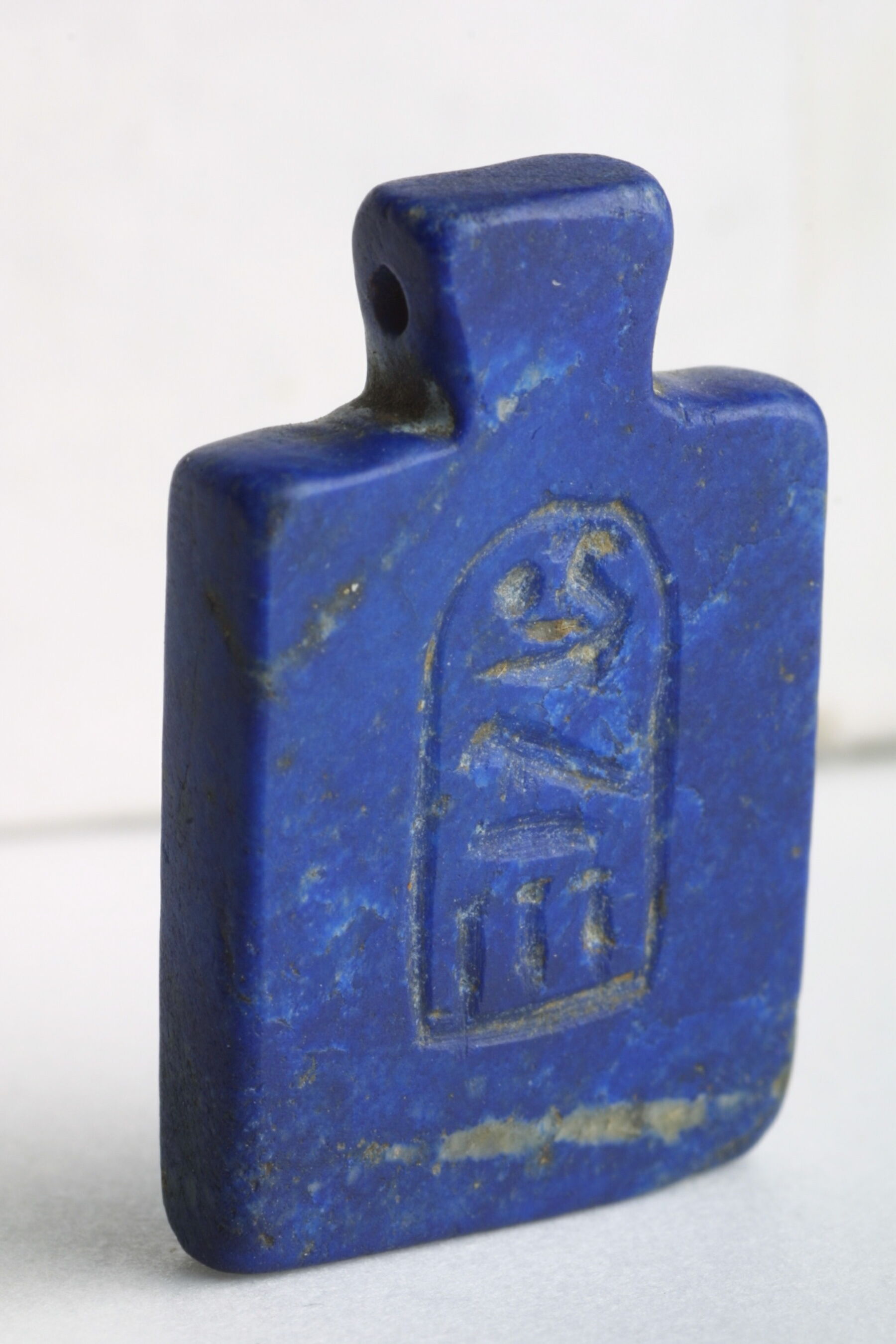Writing tablet amulets guaranteed the survival of one’s name, an essential aspect of identity and eternal life. Lapis lazuli was the most highly prized of all ancient Egyptian semiprecious stones because it was imported from northeast Afghanistan.1
This tablet is inscribed with the name Maathorneferure, meaning “She who beholds Horus, the invisible radiance of Re.” She was the daughter of King Hattusili III. She married Pharaoh Ramesses II to seal a peace treaty between the Hittites and the Egyptians. Hittite cuneiform tablets and the Marriage Stela at The Great Temple of Ramesses II at Abu Simbel record the events leading up to the marriage.2 Her name appears on both faience and stone amulets.3
MH
-
Harrell, James A. 2012. “Gemstones.” In UCLA Encyclopedia of Egyptology, edited by Jacco Dielman and Willeke Wendrich. http://digital2.library.ucla.edu/viewItem.do?ark=21198/zz002czx1r8804. ↩︎
-
Kitchen, Kenneth A. 1997. Pharaoh Triumphant: The Life and Times of Ramesses II. Cairo: American University in Cairo Press.. ↩︎
-
Troy, Lana. 1986. Patterns of Queenship in Ancient Egyptian Myth and History. Acta Universitatis Upsaliensis, Boreas 14. Stockholm: Almqvist & Wiksell International.. ↩︎
Bibliography
- Harrell 2012
- Harrell, James A. 2012. “Gemstones.” In UCLA Encyclopedia of Egyptology, edited by Jacco Dielman and Willeke Wendrich. http://digital2.library.ucla.edu/viewItem.do?ark=21198/zz002czx1r8804
- Kitchen 1997
- Kitchen, Kenneth A. 1997. Pharaoh Triumphant: The Life and Times of Ramesses II. Cairo: American University in Cairo Press.
- Troy 1986
- Troy, Lana. 1986. Patterns of Queenship in Ancient Egyptian Myth and History. Acta Universitatis Upsaliensis, Boreas 14. Stockholm: Almqvist & Wiksell International.
